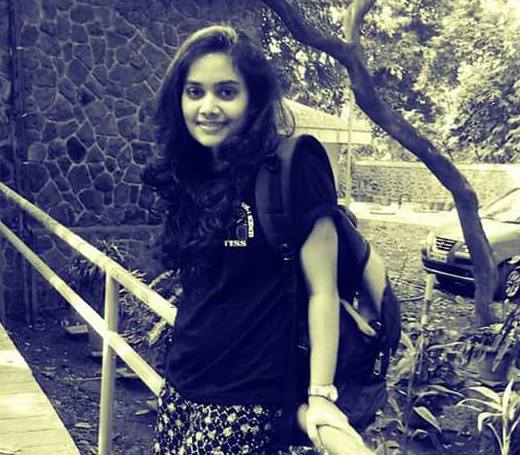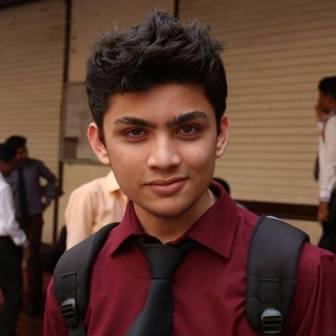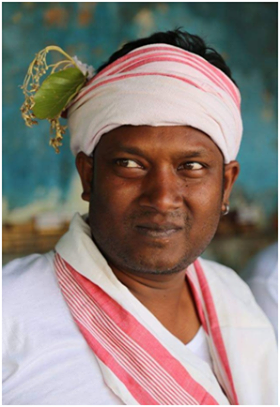Krishna Gupta
In places like Ferozpur Namak Village in Nuh Tehsil (Haryana) where this case study was conducted, it is impossible to find a local mate for each man with the kind of skewed sex ratios prevalent. Decades of unchecked sex-selective abortions have made the once fertile state of Haryana suffer a drought of brides, making human trafficking a money making and expanding racket. Often projected as voluntary marriages, every year, thousands of young women and girls are caught in the idea of a happy married life with a rich man in Haryana. This is also called a ‘marriage of convenience’. Intermediaries/brokers play a very strong role in this kind of marriages. Sadly, most ‘purchased girls’ are exploited, denied basic rights, duplicitously made to work as maids, and many even abandoned eventually. Sometimes the girls are forced to marry against their wishes. This depicts the worst conditions of women where they are treated as a commodity. Also, with the tradition of not marrying within the same village and eligible girls marrying the wealthiest suitor from afar, the majority of men in villages are left unmarried.
Marriage to an imported bride makes caste, language and culture immaterial as long as the price is paid to the girl’s family and a male child is born. The National Crime Records Bureau data shows that more than 20,000 girl children and women between the ages of 10 and 30 were kidnapped for marriage in 2013. Such marriages for women who are bought and sold as brides, often results in a life of slavery and abuse. This phenomena is very common in north-western states of India, particularly Haryana. On one side, Haryana is one of the most developed states of India but on other side it has the lowest sex ratio in the country. A cultural preference for male child caused female foeticide cases in the state which created imbalance in the sex ratio. The sex ratio in the state has declined considerably and it was 879 in 2011. The scenario of child sex ratio (0-6 years) is even more terrible. It has declined from 964 in 2001 to 834 in 2011 in the state. Due to this, many men are not able to find wives within the state and buying a bride has become the only option for them. Hence, Haryana state is considered as a main destination for bride trafficking. These brides are referred to as ‘paro’ or ‘molki’ in the state. A study by National Research Study on Human Trafficking in India (project under NHRC) reflects that more than a 100 brides have been brought into Nuh District. According to a study, price of the bride slies between Rs. 4,000 to 30,000. This supply of brides comes from Bihar, Assam, West Bengal and Jharkhand states.
In Ferozpur Namak village, people don’t tell you directly that they have purchased the bride. Because they think this is against their family standard. But the news spreads through linkages. Therefore, the sarpanch of the village has been interviewed for collecting the primary information.
Village Overview
|
Gram panchayat Block/Tehsil District State Pincode Area Population Households Nearest Town Male Population Female Population Schedule Caste Schedule Tribe Literacy Total Workers Main Workers Marginal Workers |
Ferozpur Namak Nuh Nuh Haryana 122107 434 Hectars 7,636 1,069 Nuh 3,960 3,676 80 0 51.55% 1,426 962 464 |
Connectivity of Nuh Village
|
Public Bus Service Private Bus Service Railway Station |
Available within 1 km distance No private bus service Palwal |
Destination for “paro”
Ferozpur Namak is a large village located in Nuh, Haryana with population of 1069 families residing. The males from here migrate for construction work to Palwal and Gurugram. They are paid approximately 6000 per month. Migration depends on the availability of work. Men in the village who have not migrated are self-employed, farmers, tenants and agricultural wage labourers. Females of the village do domestic work. Old people of the village do not do any type of work. Child Marriage is prevalent as many marriages happen at 16-17 years of age. Child labour is not prevalent as most of the youth of the village is engaged in studying. In normal days, electricity is for 5 hours in the village, but in the month of Ramzan electricity is for 8 hours. There is a big problem of water in the village. People in the village have to purchase government water tankers which cost 900 rupees per tanker. Most of the villagers visit government hospitals because of economic problem but they complained that government hospitals which do not provide good service. So if they had an option, they would have chosen private hospitals. According to villagers, roads conditions in the village were satisfactory. But according to the researcher’s observations, only main road was good enough.
The cases of bride buying have increased in this village in the last three-four years.
- A respondent said that she made her daughter marry at the age of 17. She gave 16,000 cash and motorcycle, single bed, fridge, cooler etc. to her daughter’s in-laws. The mediator was from their own family. This case showed that child marriage and dowry is common in the village.
- One case was of a girl who was from UP and was brought here to marry a man. the girl was brought by her aunt. She convinced victim’s father by making him realise that the victim was not treated well by her step-mother so if she gets married she will be cared for and loved by her in-laws. The girl was physically, mentally and sexually exploited. When she complained to the police, no action was taken by police against her in-laws.
- One case was of a girl who was brought here from Assam with the permission of her mother. Mother of the victim herself approached the boy to marry her daughter because her mother was alone and was fulfilling the needs of the family members. Victim was physically exploited by her in-laws. Once she even complained to police and sarpanch but no one helped her. Now she has accepted the situation, because she knows that no one is going to help her.
- One case was of a girl who was from Assam. She belonged to a poor family due to which she was married earlier. Victim was sold by an agent who arranged 40,000 rupees for the victim’s parents in exchange for the girl and brought her to the village and organised her marriage.
The phenomenon of bride buying is increasing day by day in the village. This is not new in the state. But its magnitude has increased in the last 6 years. At present, out of 1069 households, men from 200 houses have bought their brides from other states. Among these, 60 percent brides have been brought from Bihar and Jharkhand states and other 40 percent from Orissa, Assam, Eastern U.P, West Bengal and parts adjacent to Bihar. For this truck drivers and persons from neighboring villages play the role of mediators. There are not only one but 2-3 mediators involved in one marriage. One of them belongs to the area of the girl, second one belongs to the buyer’s area and the third one can be a close relative of the girl. Sometimes farmers of the village or the neighboring states who have their lands in other states play the strong role of mediators. Around ten percent marriages in Ferozpur village have been done with the help of farmers.
The low sex ratio in the state is the main reason behind the bride purchasing. As discussed earlier, the increasing cases of foeticides due to the desire for male child leads to the problem of skewed sex ratio in the state. Therefore, those people who are not able to marry within the state prefer to buy brides from outside. Their age is usually above 35 years.
The first case of bride buying in this village had occurred 10 years ago when a man in the village brought a bride from a neighbouring district with the help of mediators. Before purchasing the bride, people do not ask about the caste or religion of the girl. These girls belong to families of mostly migrant labourers. The girl’s families are easily convinced by the mediators through false promises. Every year, they migrate to north-western states from Assam, Bihar, West Bengal. These labourers are impressed by the lifestyle of people in Punjab, Haryana particularly. Therefore, parents who get a promising marriage proposal for their girl, feel happy and easily agree to this kind of a marriage.
Most of the girls are either illiterate or have just passed 5th or 10th class. They are made to work as servants and they cannot take any decisions related either to themselves or the household. These brides don’t have their own identity and the name of the girls are also changed at times. In the village, these purchased brides are not given equal status, only 10 percent women are given some rights. While their children are given equal status and equal rights in the family property. After marriage, some girls maintain their contacts with their natal families and with the help of their husbands they also provide labour jobs to their family members in the neighboring villages.
There are also some exceptional cases in the village where the bride has rebelled against her in-laws. A girl went to her home with her child and didn’t return. And when her husband went there to bring her back she filed a police complained against him. She also forced him to stay at her native place. This situation is very similar in the neighboring villages, as observed by the sarpanch.
This issue of bride purchasing cannot be solved until the sex ratio of the state is improved. Haryana government has taken many steps such as the Ladli scheme which was introduced on 20th August 2005 to improve the sex ratio. Even the state government has decided to give old age pension to parents of daughters.
~
References
Guilmoto, C.Z. and S.Irudaya Rajan 2002, “District level Estimates of fertility from India’s 2001 census” Economic and political weekly, feb.2002 (672).
Gulliot, Michel. 2002, “The dynamics of population sex ratio in India, 1971-96” Population studies, 56(2002), 51-63, printed in Great Britain.
Krishnaji, N.1987. “Poverty and Sex Ratio: Some Data and Speculations.” Economic and Political Weekly, Vol. XXII, No 23, 892- 897
Note: I worked in National Research Study on Human Trafficking in India project of (NHRC) National human Rights commission in Haryana state as an intern in 2017.
This article is purely based on my experience & learning.
~~~
Krishna Gupta has done BSW from Delhi University and is pursuing his Masters in Social work ( Dalit & Tribal Studies and Action) from Tata Institute of Social Sciences, Mumbai.









